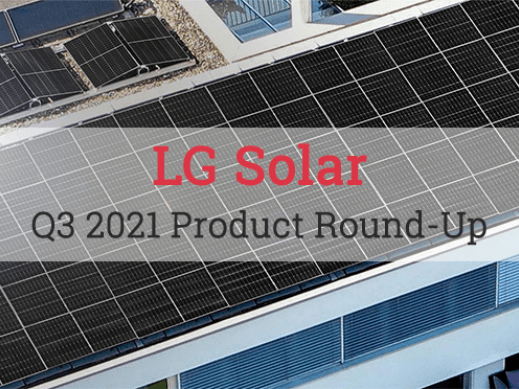
Considering solar modules as a commodity is an easy trap to fall into. DC capacity is important, but there is so much more to solar modules that should be carefully considered if you want to ensure you’re delivering the right technology to your customers. While customers may care about “first cost,” helping to explain “total cost” and system yields may have a positive impact on the preservation of margin and increased revenues for your business. In this article, we're getting an inside look from the experts at LG Solar into how to properly select the right modules for your projects!
Cells sell
Often overlooked in the residential sales process, but vitally important to the efficiency and long-term reliability of a solar module, are its cells. At a high level, there are three main types of cell architecture: N-type, P-type and Hetero-junction (HJT). P-type PERC, the most common, has been widely adopted because it is generally cheaper to manufacture and faster to scale. However, there are a few downsides for use in residential applications, such as P-type’s susceptibility to light induced degradation (LID), which is why you might see a first-year degradation allowance on modules of 3.0%.
N-type and HJT modules allow for higher conversion efficiencies than P-type, and due to chemical doping, experience very low LID. Although there is some first-year instability in performance, the first-year degradation allowance of these modules is typically no greater than 2.0%.
The other interesting technical thing to note when it comes to the cells in N-type modules such as LG’s NeON® 2 is that they are inherently bifacial without any additional process steps. This helps them to achieve conversion efficiency that is typically higher than P-type cells, even when assembled into modules with white backsheets. White backsheets do allow for some light transmittance and can produce measurable “back side” energy yield with N-type cells, meaning the kW/kWh conversion efficiency is higher than P-type PERC modules. Higher conversion efficiency translates to more energy production and higher yield over the life of the system.
The final important factor to consider is that multi-busbar, or back contact modules such as LG’s NeON2 and NeON R respectively, are less susceptible to power loss if exposed to micro-cracking. This, along with physical and chemical properties, helps substantiate the lower warranted degradation rates of N-type and HJT modules.
Typical P-type PERC modules may have an allowable degradation rate of 0.7% per year, while an N-type, such as LG’s NeON® 2, has a warranted degradation rate of 0.33%. While those fractions of a percentage may seem inconsequential, over time they add up to significant differences in performances and potential financial savings. At year 25, a 0.7% d-rate warranty has a system performing at 80.2% of its nameplate capacity, whereas the LG warranty structure, for example, would have a system performing at 90.1%.
When one considers the escalating costs of energy, that extra yield is worth valuable money. On a 10kW system in CA with $0.20/kWh escalated at 4%/year, the N-type system may generate over $10,000 in added energy savings compared to a P-type PERC module. That’s the real value that can, and should be sold.
If you’re using a third-party proposal generating tool, ensure that you’re using actual module parameters vs. system defaults. By using stock variables, you could be leaving valuable money at the kitchen table.
Is bigger better?
As more manufacturers unveil 66 cell modules or bring to market “shingled” modules that are larger in footprint than traditional 60 cell modules, it’s important to look past the upfront nameplate rating. Remember to check module efficiency and, more importantly, ensure you’re using proper dimensions when laying out an array. With setbacks to consider, some modules will allow for more overall system capacity, due to more modules fitting within the usable space. With setbacks, the extra 6” – 8” on a module can actually lower your DC capacity.
The other important factor to consider is racking and BOS compatibility. If your crews are field fabricating rack because it’s too short for these longer or wider modules, your module savings may quickly evaporate due to increased installation time and BOS costs.
Get in touch with your local Greentech Renewables sales rep to get their expert advice and understand how a higher DC capacity of a module doesn’t necessarily mean a more efficient system or even a longer-term yield.



